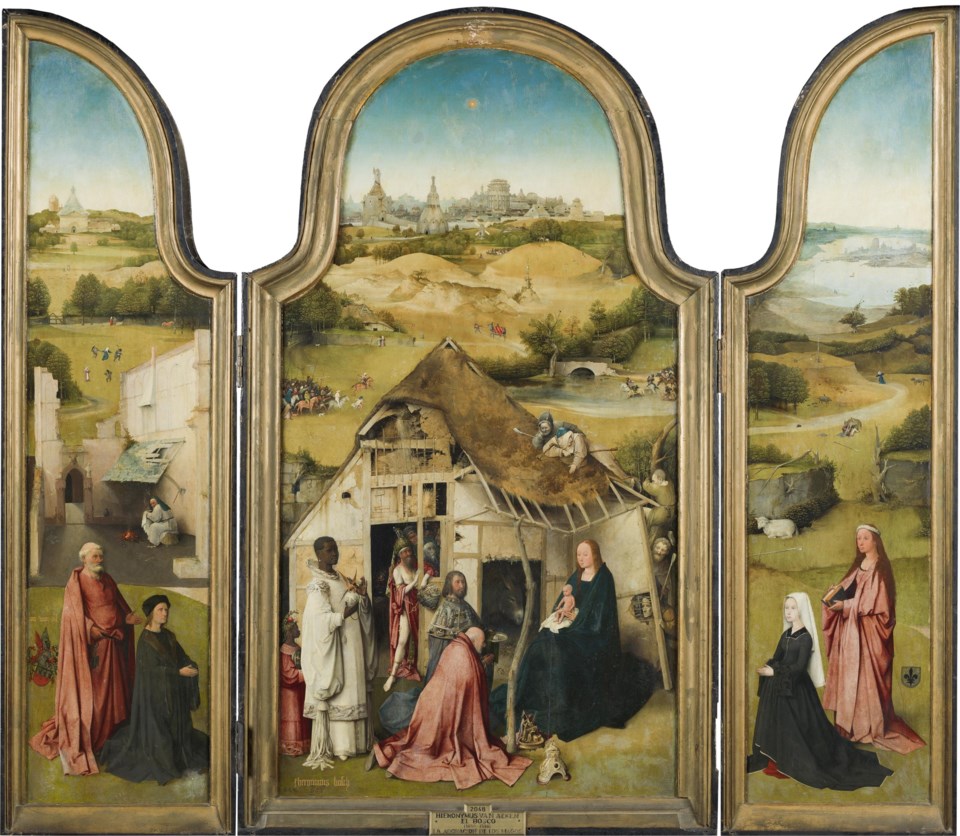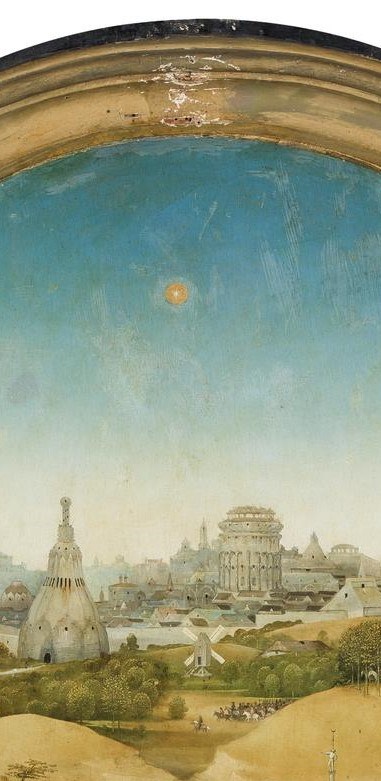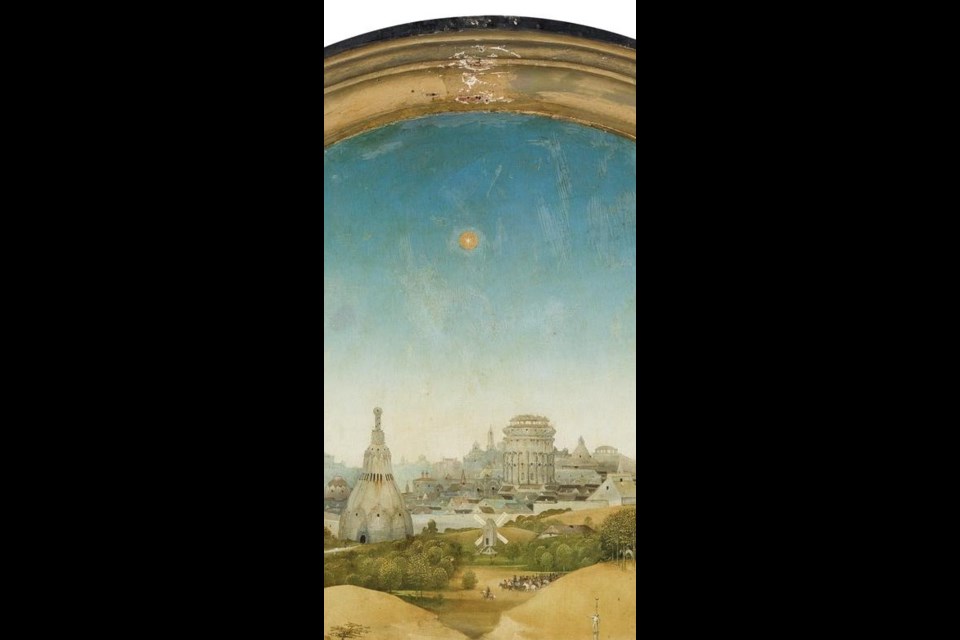We don’t really know that there were three of them. The Christmas carol refers to “Three Kings of Orient” (although they weren’t kings, either); other lore bases it on the number of precious gifts they brought; the British comedians, Peter Cook and Dudley Moore referred to “Three blokes, calling themselves ‘Maggie’,”( From their sketch, “The Gospel Truth”, which has some funny lines – like that one, and the notion that it’s an interview between Arthur Shepherd and Matthew, a reporter from the Bethlehem Star – but on the whole, not something I would endorse.)
But there could have been any number of Wise Men who came to worship the newborn King that day in Bethlehem.
There is a very important message that I take from the account of the Wise Men coming to worship the Baby Jesus, namely, that Jesus came not just for people of any particular religion, but for everyone, everywhere. I see it in the way that God notified these Wise Men.
They are advisors to kings, and have been trained-up to study and interpret signs in the heavens. I imagine that they came from separate countries (the Bible simply tells us they came from “east of Jerusalem”, which doesn’t really narrow it down). Each had seen that giant, bright star that had never appeared before, and like Richard Dreyfuss, playing with his mashed potatoes in Close Encounters of the Third Kind, they looked at the star and said to themselves, “This means something”. Perhaps they consulted holy books and learned about the prophecy that the star would herald the birth of the King of the Jews; perhaps they already knew what it meant: whatever the case, the star told them something BIG was going down, and they wanted to be there to see it.
In my overly-dramatic imagination, I see them saddling up and riding from all over, converging on the road to Jerusalem – maybe just outside the city. They meet up and learn that they all had seen the star and read that same message in it. That confirmation would have made them so convinced of what they were about to witness, that they wouldn’t have been fazed by the fact that no one in Jerusalem knew what they were talking about when they asked where “the King” was born. They might have been puzzled by the fact that King Herod wanted them to tell him in secret where the Baby was, and that their Jerusalem counterparts – the scholars Herod asked – didn’t catch on and get excited that the long-awaited Messiah had finally arrived.
No matter: The Magicould still see the star and it led them to that tumble-down stable outside an over-crowded inn.
Now, if you’ve ever had a Holy Ghost experience, you’ll have an idea what happened next. Scripture tells us that the Wise Men fell (Matthew 2:11). They didn’t bow; they didn’t kneel: they fell. They had come into the presence of Jesus, and when that happens to someone, it’s impossible to remain upright.
They presented their gifts, worshipped the Baby, and then retired for the night. It’s then, Matthew tells us, that they were warned by the Holy Spirit not to report back to Herod, but to take another way out of town.
The star is never mentioned again.
That’s significant. These wise men made their living by observing and interpreting signs in the heavens. The children of Israel were expressly forbidden to engage in “sorcery or divination” (Leviticus 19:26), but here, God announced the birth of the Messiah using those same forbidden means. Evidently, this message was for those not counted as “God’s People”.
But while the star had brought them to Jesus, once they had met Him, it was the Holy Spirit that gave them that warning. They arrived as observers of signs – they left, hearing directly from God.
This triptych, “The Adoration of the Magi” by the 15th-Century painter, Hieronymus Bosch, gives us a lot to contemplate.

In the distance, Jerusalem appears to be “business as usual”, but already, there’s a battle about to take place in the near background. Could this be the battle “in the heavenlies” of God’s forces versus the enemy, coming to a head with the birth of Jesus?
In the foreground, peasants and shepherds strain to get a look at the Baby: some peer around the stable; some are on the roof; another peers through a hole in the wall.
The religious leaders look on in horror: they appear to be imprisoned in the stable where Jesus had been born and already, their world is being rocked. Their clothing is falling off; their pretense, coming to pieces as their nakedness is revealed to the world – a job that the Baby would continue in years to come.
And look at the Magi. Talk about diversity! One is black and it’s safe to assume that the other two are of different ethnicities.
It reinforces the idea, that Jesus has come for all. Race means nothing to God: what matters is one’s relationship with Him, and skin colour is a non-starter. The whole idea of Jesus is to bring us together and create what Peter later called “a peculiar people”. One’s past deeds and religious practices are of no consequence. What matters is how one goes forward.
One more thing. What’s that in the distance, in the middle of the landscape, right under the star?
 It’s a windmill – symbol of Bosch’s homeland. Perhaps it’s his way of saying, “He came for us, too.”
It’s a windmill – symbol of Bosch’s homeland. Perhaps it’s his way of saying, “He came for us, too.”
Something important to keep in mind is that the Magi saw the star because they were constantly looking for something. They were seeking. It’s possible the scribes and scholars Herod asked about the birthplace of the Messiah figured they knew the lot and had stopped seeking – and they certainly weren’t going to listen to these foreigners – soothsayers, to boot.
If we keep seeking, it’s written that we will find, and God will use whatever means necessary to communicate to us, so we can hear and understand. It could be the pagan symbol of the Christmas tree – evergreen, rooted to the spot, reaching to Heaven with branches spreading out to shelter anyone who comes; at the same time, foreshadowing Jesus’ death. For that matter, it could be the celebration of Christmas around the winter solstice, celebrating the arrival of the true Light in the world. Maybe it’s St Patrick using a shamrock to explain the Trinity; or Larry Norman writing rock ‘n’ roll “Jesus songs”; or a sign in the heavens to attract people who made a living out of observing signs in the heavens: God talks to us in our language, so we will understand and draw closer to Him – so He can draw closer to us.
Drew Snider is a writer, pastor and former broadcaster. He spent a decade ministering at Gospel Mission on Vancouver's Downtown East Side and has been a guest preacher at churches including Westshore Alliance in Langford, Westpointe in Vancouver, The Oasis in Duncan and Port McNeill Full Gospel.
You can read more articles from our interfaith blog, Spiritually Speaking, HERE



